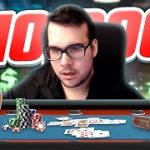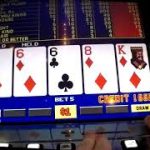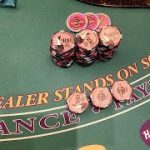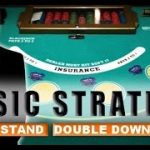Poker Tips Video Source & Information:
“You don’t play poker to sound smart. You play poker to win money.” – Brad Wilson
PokerCoaching coach Brad Wilson walks you through his step by step process into how to help read your opponent’s hands when playing in poker cash games.
In this video you will learn the tools that will help you gain a higher win rate, more frequent organic exploits, a process for considering postflop variables & lessons from mass data analysis (MDA).
It is important to categorize your opponent’s play style that will help you in your decisions when playing hands against them.
Using Mass Data Analysis you will see how different recreational players will react to different bets as well as their sizes. This data is really interesting to analyze as it gives you a much better understanding of what players are doing with different hand types.
#PokerStrategy #BradWilson #CashGamePoker
Source: YouTube
![How To READ Your Opponent’s HANDS [Poker Strategy]](https://www.casinovideos.site/wp-content/uploads/2022/07/48116/how-to-read-your-opponents-hands-poker-strategy.jpg)







What was the most valuable lesson that you learnt from Brad’s webinar?
I used to study by doing certain things, right or wrong , all day just to see what happens. My coach said to play small fifty , one hundred , but that sounded like madness to me. I started running up through em and quit my lessons ,
A rose by any other name is just as sweet, volitile rec I like that
The volatile rec sounds like rampage.
Yes i love this guy. Also because he teaches exaclty the game I am playing (100BB cash games). Cant wait to bring my kids to bed and watch this video!!!
I’ve come to notice the two most obvious tells in the game: when they turn over the winning hand, they did bet for value. When they muck their cards, they were bluffing. Easy game
Chasing poker greatness- tactical tuesday. Honestly one of the best podcasts/shows to really improve how to think through hands
The problem I see with this approach is that we're just comparing absolute hand strengths, instead of what matters for exploiting which is deviations from GTO. Of course when you get action on a wet board like QJT the opponent is more likely to have 2 pair +, while if you get action on a dry board like K62 opponent is likely to have 1 pair at best. But that's not evidence of opponents being exploitable, it's just because average hand strength is higher on wet boards for everyone. The video gives the impression that recreationals call "strong" on wet boards and "weak" on dry boards, but in terms of deviations from GTO it's actually the opposite. Recreationals overfold on dry boards (e.g they fold flop with QJs on K62r, GTO call), while they overcall on wet boards (e.g they call flop with ace-rag on QJTr, GTO fold). So the exploit is to overbluff flop on dry boards (then underbluff turn and river when called), and to underbluff flop on wet boards (then overbluff turn and river when called).
The green section of "Wet Board Call vs. Cbet" pie chart at 26:22 does not match your MDA. Should be 39% according to your MDA. I find it interesting your MDA shows recs calling Trash, Gutshots and bottom pair nearly 50% on a wet board. I wonder where the MDA comes from.
I legit can't keep up with the content